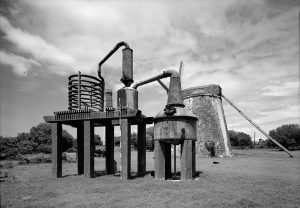“Give intoxicating drink to one who is perishing,
And wine to one whose life is bitter.
Let him drink and forget his poverty,
And remember his trouble no more.” Proverbs 31:6-7 [NASB]
The history of fermented beverages dates back to ancient times. Evidence from the late Stone Age suggests that intentionally fermented drinks were already in existence during the Neolithic period around 10,000 BC. Moreover, the ability to metabolize alcohol likely predates humanity, with primates consuming fermenting fruit.
The end product of fermentation is Ethyl Alcohol, or ethanol (C2H5OH), which has been used to create various beverages such as beer, wine, and spirits throughout history, including on St. Croix. To produce ethanol, fermentable sugars from plants are essential. While plants contain sucrose, which does not ferment directly, the enzyme sucrose synthase is needed to convert sucrose into fermentable invert sugars like glucose and fructose.
Interestingly, molasses is a byproduct of sugar processing, comprising the remaining invert sugars after sucrose crystallization. Blackstrap Molasses, a thick and dark syrup, is formed through caramelization during the boiling of sugar cane juice. This type of molasses is valued for its rich flavor and is commonly used as a sweetener in various recipes, especially in baking and cooking. Additionally, blackstrap molasses is recognized for its nutritional content, containing essential vitamins and minerals like iron, calcium, and magnesium. The term “blackstrap” originates from the Dutch word “stroop,” meaning syrup.
In the past, fermentation relied on wild yeast present in the environment. Unlike modern practices using commercial yeast strains, people in the 18th century Danish West Indies utilized naturally occurring wild yeast strains found in the air. These wild yeast strains were captured and cultivated for both baking and brewing purposes.
The final step involves heating the fermentation product to a temperature that induces ethanol evaporation. Subsequently, the vapor is passed through a cooling coil to condense it back into a liquid state before being stored in containers. An intriguing piece of history is the theft of a remarkable copper still that was previously showcased at the Estate Whim Museum.
